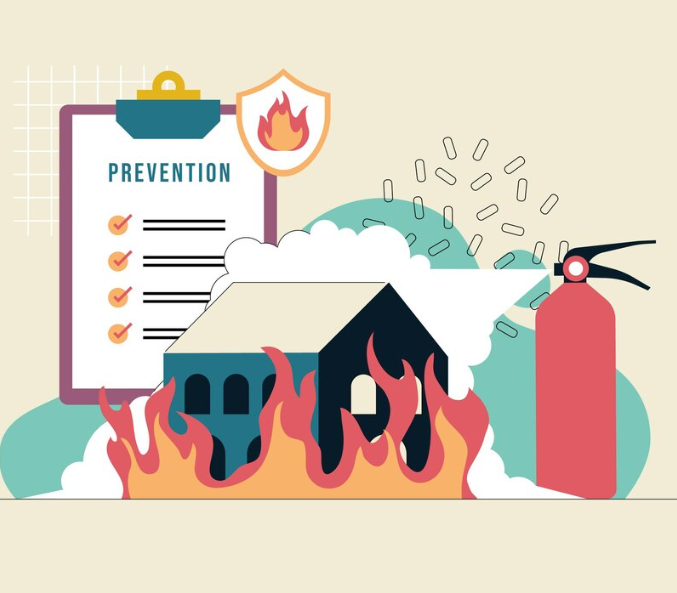
Fire Risk Assessment: Ensuring Safety and Compliance in Your Building
Fire safety should be a top priority for any business or residential building. Understanding and managing fire risks can save lives, protect property, and help you stay compliant with regulations. A comprehensive fire risk assessment is essential in identifying potential hazards and mitigating them to prevent dangerous situations. Let’s explore what a fire risk assessment entails and how you can ensure your premises are safe.
What is a Fire Risk Assessment?
A fire risk assessment is a systematic evaluation designed to identify fire hazards within a building. It involves assessing potential sources of fire, understanding who may be at risk, and determining the necessary actions to minimize those risks. This process is crucial not only for protecting individuals but also for ensuring compliance with fire safety laws. It’s especially important in places with high foot traffic, such as office buildings, apartment complexes, and public spaces.
The goal of a fire risk assessment is to recognize potential dangers, evaluate their severity, and take appropriate action to either eliminate or control them. This proactive approach helps prevent fires from occurring and reduces the damage if a fire does happen.
The Importance of Fire Safety Regulations
In the UK, the Regulatory Reform (Fire Safety) Order 2005 outlines the legal requirements for fire safety in non-domestic buildings. This regulation applies to offices, schools, hospitals, and other public spaces. The legislation ensures that property owners and managers assess fire risks and put safety measures in place.
Following high-profile incidents such as the Grenfell Tower fire, fire safety has gained more attention, leading to a push for more rigorous regulations. The Hackitt Review in 2018 emphasized the need for improved fire safety measures, especially during the design and construction stages of buildings.
Fire Risk Assessment Form: Key Elements
A fire risk assessment form is a vital tool for documenting potential hazards and the measures taken to address them. The form should include the following sections:
- Fire Hazards: “What potential sources of ignition have you identified?”
- People at Risk: “Who is most likely to be at risk in the event of a fire?”
- Evaluation and Action: “What steps have been taken to reduce the risk or eliminate the hazard?”
- Escape Plans: “Have you established clear and accessible escape routes?”
- Chemical and Hazardous Material Storage: “Are dangerous substances being stored safely?”
These questions guide the assessor in evaluating fire risks and implementing preventative measures.
Who is Responsible for Fire Risk Assessments?
The responsibility for conducting fire risk assessments typically lies with the building owner or manager. However, it is often advisable to involve professionals, such as Fire Risk Assessors, Chartered Fire Engineers, or Health and Safety Officers, to ensure the assessment is thorough.
The designated person must ensure that fire risks are regularly reviewed and that the necessary safety measures are implemented. This includes maintaining firefighting equipment, ensuring that evacuation plans are in place, and providing training for employees or residents on fire safety protocols.
The Benefits of Conducting Fire Risk Assessments
Regular fire risk assessments help businesses stay safe and compliant with fire safety regulations. The process not only helps identify and mitigate fire hazards but also fosters a culture of safety within the workplace. Employees and residents are more likely to follow fire safety protocols if they understand the risks and are trained in how to respond to emergencies.
In addition to protecting people’s lives, a robust fire safety plan can minimize damage in the event of a fire, reducing financial losses and ensuring business continuity.
Identifying Fire Hazards
Identifying potential fire hazards is a critical part of the fire risk assessment. The first step is to locate ignition sources, such as electrical equipment, open flames, or cooking appliances. Other common fire hazards include:
- Electrical wiring and equipment
- Gas or oil heaters
- Matches, lighters, and smoking materials
- Cooking appliances and flammable liquids
Next, assess the materials that could fuel the fire, such as paper, cardboard, textiles, and chemicals. These materials burn easily and can help spread the fire to other parts of the building.
Finally, consider oxygen sources, such as oxygen tanks used in medical settings or oxygen-rich environments like welding areas, which can accelerate the spread of fire.
Preventing Fires Through Proactive Measures
A key part of fire risk assessments is developing strategies to prevent fires from occurring. This can include:
- Implementing Safety Protocols: Establish strict guidelines for handling flammable materials, ensuring that they are stored correctly and labeled properly.
- Installing Fire Safety Systems: Invest in fire suppression systems like sprinklers and alarms, and ensure they are regularly tested and maintained.
- Training Employees: Conduct fire safety training for staff to help them understand evacuation procedures and how to use firefighting equipment effectively.
By implementing these measures, you can significantly reduce the risk of a fire and enhance the overall safety of your building.
Final Thoughts
Fire risk assessments are an essential part of maintaining a safe and compliant building. Regular assessments help identify potential hazards, reduce risks, and protect both people and property. It’s vital to stay informed about fire safety regulations and take proactive steps to safeguard your premises.
By training staff, implementing effective fire prevention systems, and regularly reviewing your fire risk assessments, you can ensure that your building remains a safe environment for everyone. Stay ahead of fire risks and keep your premises safe with thorough, ongoing fire risk assessments.